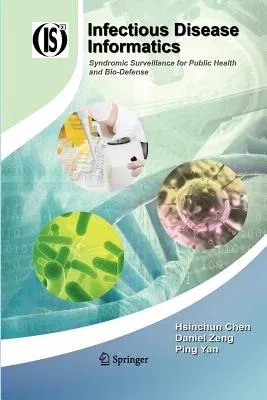Hsinchun Chen
(Author)Infectious Disease Informatics: Syndromic Surveillance for Public Health and Bio-Defense (2010)Paperback - 2010, 25 February 2012

Qty
1
Turbo
Ships in 2 - 3 days
In Stock
Free Delivery
Cash on Delivery
15 Days
Free Returns
Secure Checkout
Part of Series
Integrated Information Systems
Part of Series
Integrated Series in Information Systems
Print Length
210 pages
Language
English
Publisher
Springer
Date Published
25 Feb 2012
ISBN-10
1461425395
ISBN-13
9781461425397
Description
Product Details
Authors:
Book Edition:
2010
Book Format:
Paperback
Country of Origin:
NL
Date Published:
25 February 2012
Dimensions:
23.39 x
15.6 x
1.27 cm
ISBN-10:
1461425395
ISBN-13:
9781461425397
Language:
English
Location:
New York, NY
Pages:
210
Publisher:
Weight:
335.66 gm

